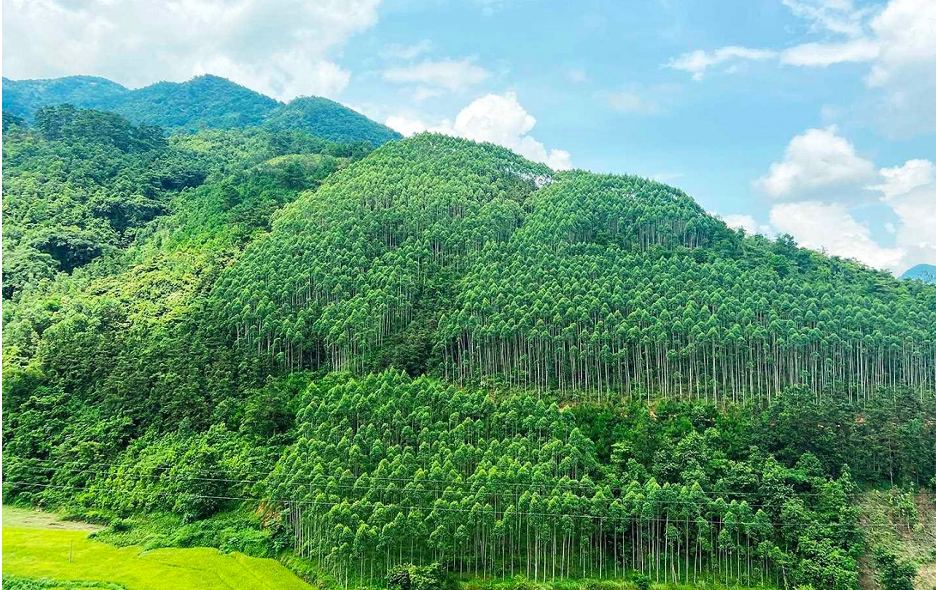Setting standards for Forest Carbon Credits
G+ ( en.mae.gov.vn/setting-standards-for-forest-carbon-credits-9056.htm)
The Forestry and Forest Protection Department (Ministry of Agriculture and Environment) is seeking public feedback on the draft national technical standard “Forest Carbon Credits - General Requirements.” According to the draft, forest carbon credits will be issued based on clear criteria related to conditions, measurement methods, appraisal, and verification.
Expecting a Forest Carbon Credit Standard by 2026
A forest carbon credit is a tradeable certification representing the right to emit one ton of CO₂ or its equivalent (CO₂e).
These credits are generated from carbon projects in the forestry and land-use sector, including: REDD+ (Reducing emissions from deforestation and forest degradation, conservation, and enhancing forest carbon stocks); A/R (Afforestation/reforestation projects, including new plantations or promoting natural regeneration); IFM-N (Improvement of degraded natural forests, including enrichment planting); IFM-P (Improvement of planted forests, enhancing productivity and extending harvest cycles); AFP (Agroforestry projects, such as scattered timber tree planting).
These projects not only help reduce greenhouse gas emissions but also contribute to biodiversity conservation, community livelihood development, and environmental protection. They represent a balanced approach between economic benefits and sustainable development.

According to Vu Tan Phuong, Director of the Sustainable Forest Management Certification Office, the draft national standard for forest carbon credits is being developed with a clear roadmap, with expected issuance in early 2026.
Clarifying the concept of carbon credits is the first step toward establishing a transparent and feasible operating mechanism. A forest carbon credit is a tradeable unit representing the right to emit one ton of CO₂ equivalent.
To generate such credits, projects must demonstrate a reduction in greenhouse gas emissions or an increase in carbon sequestration compared to a reference level, while adhering to measurement, monitoring, and independent verification procedures.
Under the new draft standard, forest carbon credits will be issued based on clear criteria related to conditions, measurement methods, appraisal, and verification.
Specific requirements include ensuring additionality (meaning emission reductions can only be achieved through these projects); avoiding double counting with other projects; and maintaining transparent legal documentation on land-use rights, free of disputes, and compliant with forest land-use planning. Projects must also comply with environmental protection regulations, biodiversity conservation, and sustainable forest management practices.
Measurement and reporting of emissions and carbon sequestration must follow the IPCC (Intergovernmental Panel on Climate Change) methodology and the national standard TCVN 14287:2024, integrating forest inventory data, land cover maps, and land-use change statistics. A detailed monitoring plan must be established, with periodic reporting at least every two years, and results publicly disclosed on the project’s website to ensure transparency.
Opening the way for a new market
Developing the forest carbon market not only brings economic benefits through the trading of credits but also incentivizes sustainable forest management, linking nature conservation with local livelihoods. When implemented effectively, it can serve as a source of green financing to support local authorities in forest protection while directly contributing to the national emissions reduction strategy.
According to the Forestry and Forest Protection Department, implementing forest carbon projects in Vietnam still faces many challenges. First, projects must ensure true additionality and avoid overlap with other programs. Measurement, reporting, and verification (MRV) also require high technical capacity, integrated data systems, and skilled personnel.
Moreover, projects face risks of leakage and reversal of emissions due to natural disasters, forest fires, or disease outbreaks. To mitigate these risks, projects need to develop risk response plans and establish a buffer pool, meaning a portion of credits is reserved and not traded to compensate for unforeseen fluctuations.
Vietnam is currently finalizing the legal framework for its domestic carbon market, aiming to connect with regional and global markets. In the future, alongside the development of digital technology and remote monitoring systems, the forest carbon credit market is expected to expand rapidly, becoming a key pillar of the green economy and sustainable development.
When all these elements operate in harmony, the forest carbon market will not only contribute to climate change mitigation but also open a path toward a green and sustainable development trajectory for Vietnam’s economy for decades to come.
Khanh Ly